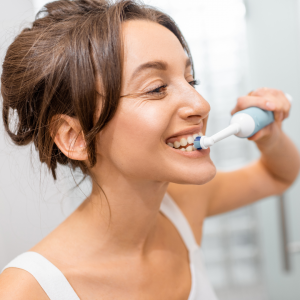Beyond Brushing
May 01,2024
Beyond Brushing

Recently we received an email from a patient of ours who has moved from Darien, CT, to another country. He now had many new different toothpastes to choose from, and it got him thinking about how he was brushing his teeth, so he reached out to us with several questions. After some discussion amongst our team of Dr. Lehmann, Dr. Lee, and Doris and Cat our hygienists, we came up with some answers. We added our sources too. We thought we would share this information with you because it seemed not only useful but interesting too!
We looked to the Colgate Global Scientific Communications Team, who recently published some information last updated on January 9, 2023.
First, when you brush can be as important as how you brush. Timing is everything ! Brushing your teeth after eating can sometimes affect your tooth enamel. In fact, the Mayo Clinic warns that if you’ve consumed foods containing citric acid, like oranges and lemons, brushing too soon can be bad for your teeth. Why? Because these acidic foods weaken tooth enamel and brushing too quickly can remove the enamel. To be safe, try to wait at least 60 minutes after eating/drinking before your brush. This gives your saliva a chance to naturally wash away food particles, so your mouth returns to its proper pH level. It's best to stick to drinking water or chew sugarless gum while waiting for this to happen.
Second, there is that issue of the awful taste in your mouth if you brush before you eat or drink something - why is that? Besides your tongue, other parts of your head and throat are instrumental in your ability to taste. These include the roof of your mouth (soft palate), the inside of your cheeks, nasal cavity, and epiglottis. Your taste receptors are what allow you to detect five different flavor types: salty, savory (aka umani), sour, sweet, and bitter.
One key ingredient in toothpaste is sodium laurel sulfate (SLS). It's a surfactant (a type of soap). It's found in many beauty and household products, not just toothpaste. SLS creates suds or foam while you brush and helps clean your teeth. SLS does two things that can transform OJ from a sweet, refreshing drink into a glass of bitterness: (1) It suppresses the receptors on the taste buds that can pick up on sweet flavors. So, for a bit, you're not able to taste "sweet" no matter what you drink. (2) It breaks up phospholipids, the fatty compounds that help reduce bitter tastes by blocking the receptors that sense bitterness. If you are curious, you can talk to us at your next dental appointment about trying a toothpaste that doesn't contain SLS. We are happy to answer all of your dental questions!
Thanks for reading our May blog entry! Don't forget to follow us on Instagram @maryanndds and email us to schedule your next dental appointment hello@maldds.com we are always happy to hear from you!